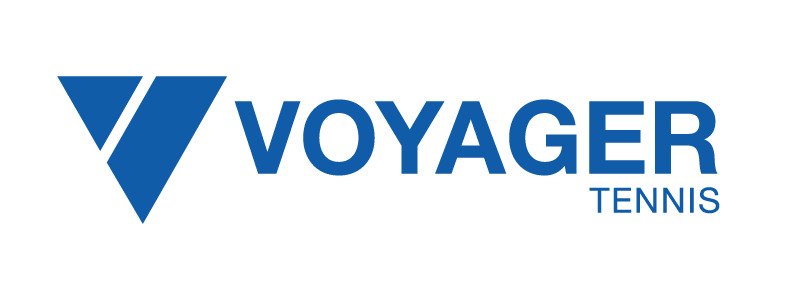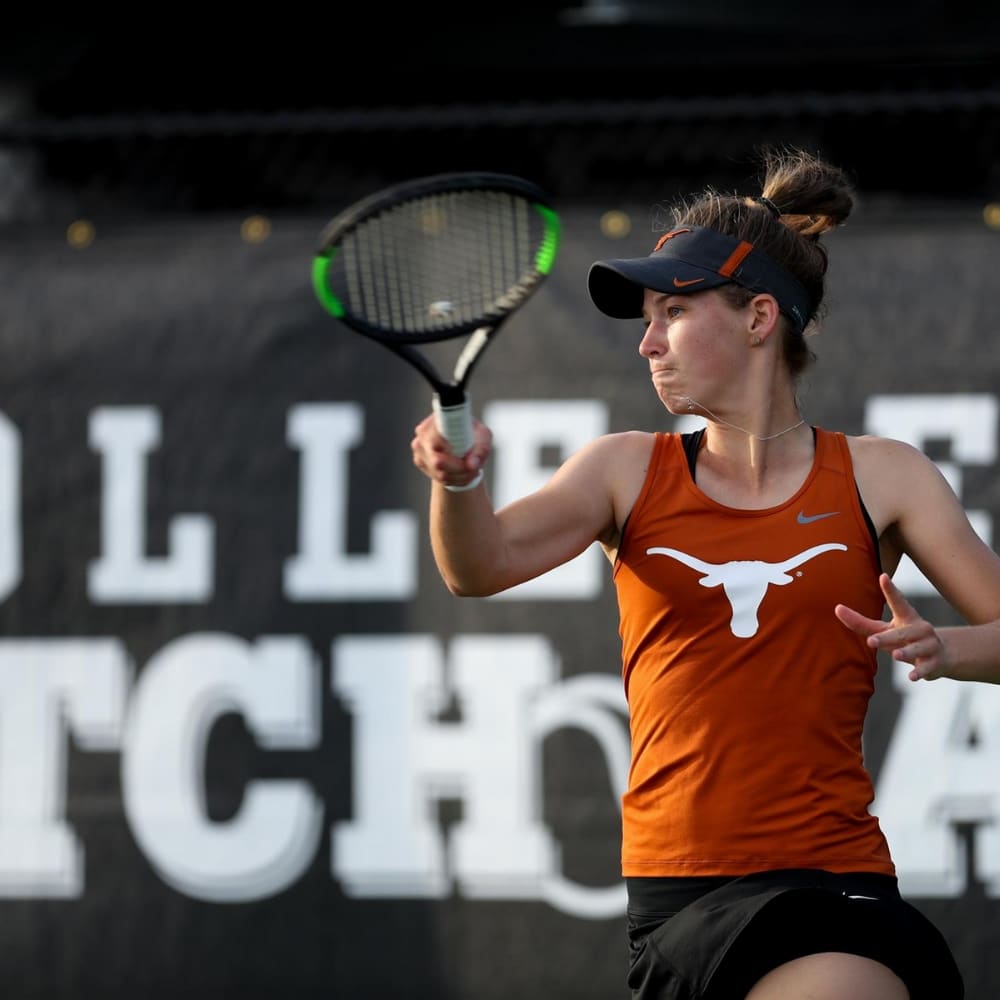
In our previous article we discussed how a U.S. College can provide an incredible education and life experience for elite tennis players with scholarships worth up to US$400,000 over a 4 year period. Parents living in countries outside the United States might be thinking that it’s almost too good to be true and wondering why colleges would invest so much in the tennis athletes. To help you understand this better, we’ll now paint a picture of how big college sport is in the United States.
US intercollegiate sport
College sport in the United States is a big business that has been around since the 1840s and has a large economic impact on the schools themselves and their surrounding communities. There are a number of US colleges that have football stadiums with capacities of over 100,000 people which are full during both home and away games, producing substantial revenue from ticket and merchandise sales and broadcast contracts.
As an example, the University of Texas’s football programme, the most valuable in college sports, makes an average of US$93 million per year. The National Collegiate Athletic Association (NCAA) earned US$989 million in revenue in 2014 from television, advertising and licensing revenue, and the schools benefit from ticket and merchandising sales and donations. As a result, American colleges invest a huge amount of resources in their sporting facilities, coaches and athletes.
To give you an idea of how much some colleges are willing to invest, as of 2018, the highest paid National Football League college football coach was Nick Saban – $11,132,000 from the University of Alabama – and the highest paid basketball coach was John Calipari – $7,450,000 from the University of Kentucky.
As you can see, intercollegiate sport is a huge business in the United States, and elite tennis players from countries all around the world can benefit from this. In the United States, there are over 24 million students enrolled in around 4,500 colleges, with about 800,000 of these being international students. In 2019, around 950 of these colleges had tennis scholarships available for men and about 1,100 had tennis scholarships available for women.
As we’re sure you can imagine, the choice of colleges can be daunting, and the application process is extensive. Fortunately, there are specialists who can guide you through this process and take on some of the time-consuming elements, ensuring you don’t make any mistakes that could make your child ineligible.
Tennis requirements for college scholarships
College coaches now use the universal tennis rating (UTR) as their main tool for recruiting players into their teams. Any player who is serious about going to college needs to know what their UTR is and what UTR they need to achieve in order to go to their desired college. For male players, athletic scholarships are available if they have a UTR range of 9.5 to 13.5+ across several divisions, and the higher a player’s UTR, the more opportunities will be available. The same applies to females with a UTR range of 6.5 to 10.5+.
The earlier you know what your child’s UTR needs to be, the better you can plan, which will increase the likelihood of your child achieving their goal in this area. In an upcoming article, you will find a tracking table across every age group so that you can see what level of college your child is tracking towards.
Academic requirements
In the majority of cases, elite tennis players will get a large percentage of their college scholarship based on their tennis performances, but there are also minimum academic requirements to be eligible.
As early as Year 9 of high school, students need to understand the following academic requirements of Division 1 and 2 US colleges:
- Subject selection: students will need to undertake and pass sixteen core courses from Year 9 onwards, including subjects such as English, maths, science, social science, plus four additional courses.
- US grade point averages (GPA): students will need to average Bs and Cs in all of their core courses in Australia as a minimum to be eligible for most Division 1 and Division 2 programmes, which equates to an Australian grade point average of 3.5+ (converts to a 2.5 US GPA).
- Suite of Assessments tests (SAT) scores: this is a one- off exam that students will generally sit during or after Year 12. Division 1 and 2 colleges are generally looking for a minimum SAT score of 1,000 and students can re-sit this exam if they don’t achieve their required score.
It’s important to note that if players do not meet academic requirements for Division 1 and 2, there are other options and pathways available such as junior college, which can be a stepping stone to the division your child is looking to play in. There are also hundreds of Division 3 NCAA and National Association of Intercollegiate Athletics (NAIA) programmes (smaller four-year programmes) which don’t require the core course prerequisites for entry into college.
Every country will have a slightly different schooling system and you’ll need to seek advice from an expert before making academic decisions.
Other requirements
Besides basic tennis and academic requirements, colleges are also looking for factors such as:
Tennis achievements
- Strong doubles results as well as singles results, as this is a key component of college tennis competition
- Proof of progression in tennis results over a long period
- A well structured and appropriate video highlighting the child’s strengths and abilities
Personal and athletic characteristics:
- Recommendations from established, credible coaches in the form of references
- Character references from school
- Details of any charitable work or past activities that show good character
- Recommendations from a credible college placement company
Mistakes to avoid
One of the hardest aspects of going to a US college is finding one that is the right fit for the individual. With around 4,500 to choose from, it’s no wonder that many people run into trouble.
There are a number of mistakes that parents make when taking the application process into their own hands, including:
- Not understanding eligibility requirements from a tennis and an academic perspective. This is by far the most common mistake.
- Application mistakes. Parents have to face a huge learning curve in a short period of time, and one application mistake can cost their child a year of eligibility.
- Not understanding the subtle and ever-changing rules and restrictions of the NCAA and NAIA.
- Waiting until Year 12 for advice.
- Relying on other families who have only been through this process once. No two families will have the same process or outcome.
- Rushing the coach contact process.
- Accepting the first offer that comes to hand.
- Prioritising the wrong things, for example the college location versus the coach.
- Doing it themselves. The danger here is parents not being aware of the eligibility pitfalls, and more importantly, putting themselves in a situation where each coach is guiding them on their decision rather than an independent, unbiased expert.
Unfortunately, in recent years we have seen parents make several of these mistakes and can’t recommend strongly enough that you utilise the services of a college placement expert to guide you through the process and help find the college that suits your child.
Choosing a high school that balances academic studies and tennis
If you and your child are considering the pathway of a US college scholarship, the high school your child attends can have a significant impact on their ability to reach their potential as a tennis player.
In primary school (ages five to twelve), the school is less impactful as academic studies in this age group are less critical and it’s relatively easy for your child to get the tennis training hours they require to become an elite player. In high school (ages twelve to eighteen), the training, competition and academic requirements all increase at the same time, so it can be one of the most challenging periods for an elite tennis player.
These are the most common challenges that players face if they and their parents have chosen an inappropriate school for pursuing elite tennis:
- As the academic requirements increase, the student decreases their training and competition load, which can severely limit tennis progress.
- For an elite player in Year 7 and 8, there are lots of older students to practise with, but by the later years in high school, these older players will have graduated. Your child could then become the best player at the school with no other students to push them.
- Students in their mid-teens experimenting with alcohol and recreational drugs, which can derail the focus and potential of any elite athlete.
It’s vitally important to choose a school that balances your child’s tennis and academic needs. If the school you’ve chosen doesn’t provide a quality tennis programme, make sure there are excellent training opportunities close by that your child can attend before and/or after school.
The optimal high school for elite players is one that has a top-quality tennis programme with flexibility and opportunities to compete on weekends, and also provides a good level of education.
Summary
Students can get a great head start in life by combining their love for tennis with a US college education, but there are many things parents need to take into consideration when their child is going down this path. In particular, they need to understand the specific requirements US colleges have.
Actions to consider:
- When choosing a high school for your child, understand how it can complement their tennis programme.
- Engage as soon as possible with somebody who has expertise and experience in helping students obtain athletic scholarships to US colleges. An example of a good consultancy is Study and Play USA, which players in our tennis academy, Voyager, have used with a lot of success.
- Pay attention to your child’s UTR progress to ensure they are on track to meet U.S. College tennis requirements.
- Set goals and develop a plan based on the outcome that you and your child want to achieve, which is what the next chapter is all about.
References
Chris Smith, ‘College Football’s Most Valuable Teams’, Forbes (2018) www.forbes.com/sites/chrissmith/2018/09/11/college-footballs- most-valuable-teams/#7975f5016c64
Kevin McGuire, ‘NCAA revenue jumps closer to $1 billion’ (2015) http://collegefootballtalk.nbcsports.com/2015/03/11/ncaa- revenue-jumps-closer-to-1-billion
Bobby Rich, ‘The 25 Highest-Paid College Coaches of 2019’, The Quad (2019) https://thebestschools.org/magazine/highest-paid-college- coaches
College Scholarships, ‘Tennis Scholarships For Your College Education’, www.collegescholarships.org/scholarships/sports/ tennis.htm
Photo: Daniele Wagland playing for University of Texas
By Ryan Henry, Managing Director of Voyager Tennis and Ex-Pro Tennis Player




